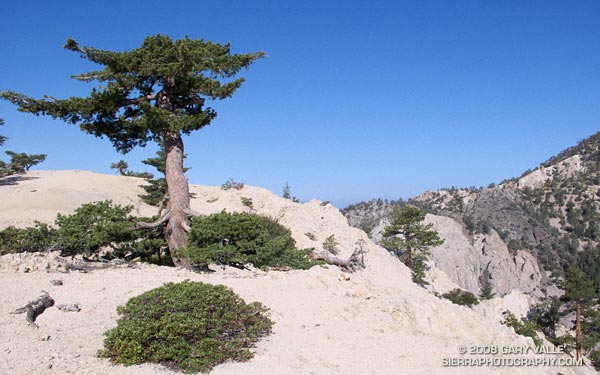
Often described as the largest and tallest of the pines, Sugar pine can grow to heights of 150 feet or more. According to the National Register of Big Trees, the current U.S. champion sugar pine measures 209 ft. tall, with a spread of 59 ft.
The sugar pine pictured above is only a fraction of this size — at first glance it looks like the tree has been topped. Its reduced height is due to the harsh environment in which it grows. Sugar pine and Jeffrey pine found on the higher windswept ridges and mountain tops of the San Gabriel Mountains (and other ranges) are often stunted in this manner.
Research suggests that a number of factors contribute to this adaptation. Foremost among these factors is wind. A tree will respond to a windy environment by increasing the diameter of its trunk, and reducing its height. Water stress is another key factor. Shallow granular soil, low humidity, increased radiation, hot summers and cold winters increase water stress; and a windy environment will amplify the stress.
In such a demanding environment everything matters — snow deposition patterns, aerodynamic effects, competition with brush, subtle differences in slope aspect, mechanical damage, damage from pests, and more.
The photograph of the sugar pine is from the Pleasant View Ridge Snow run in May.
